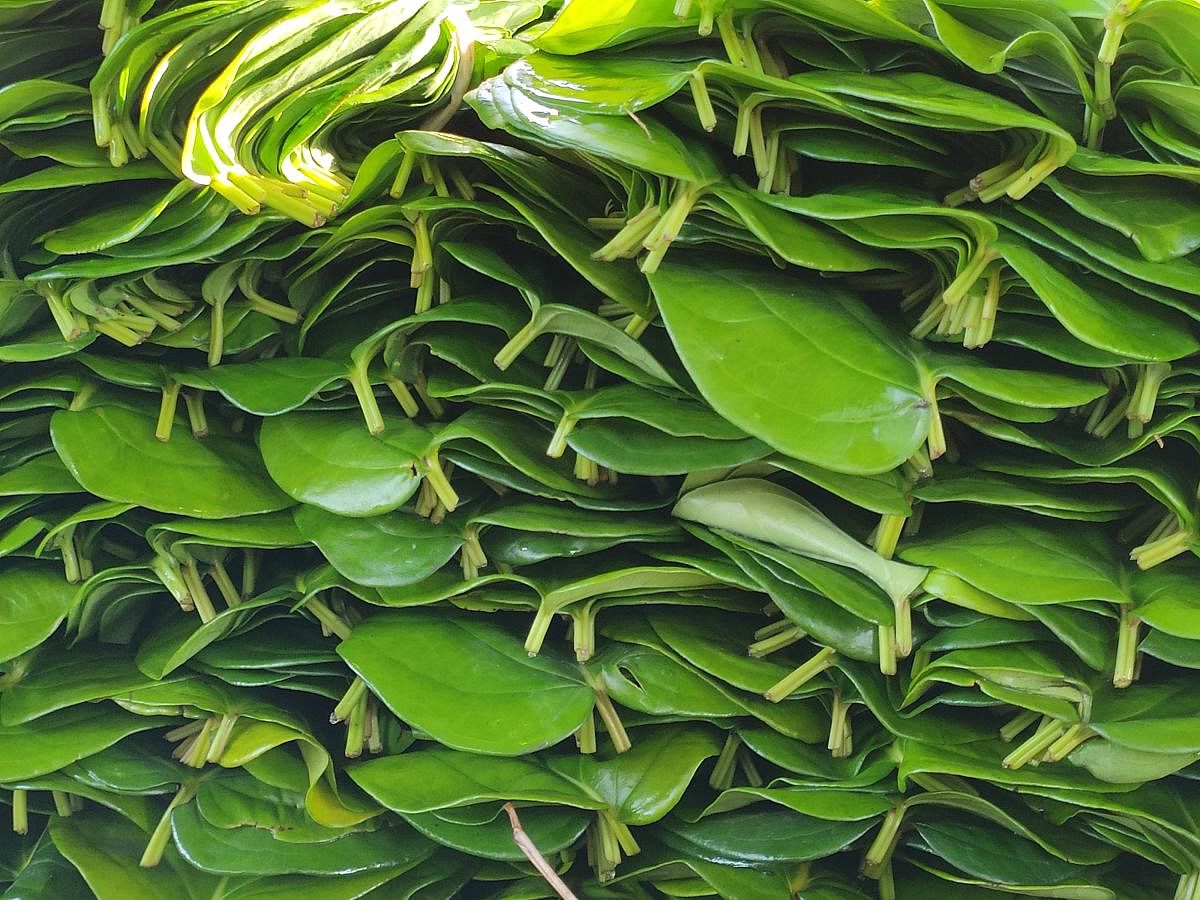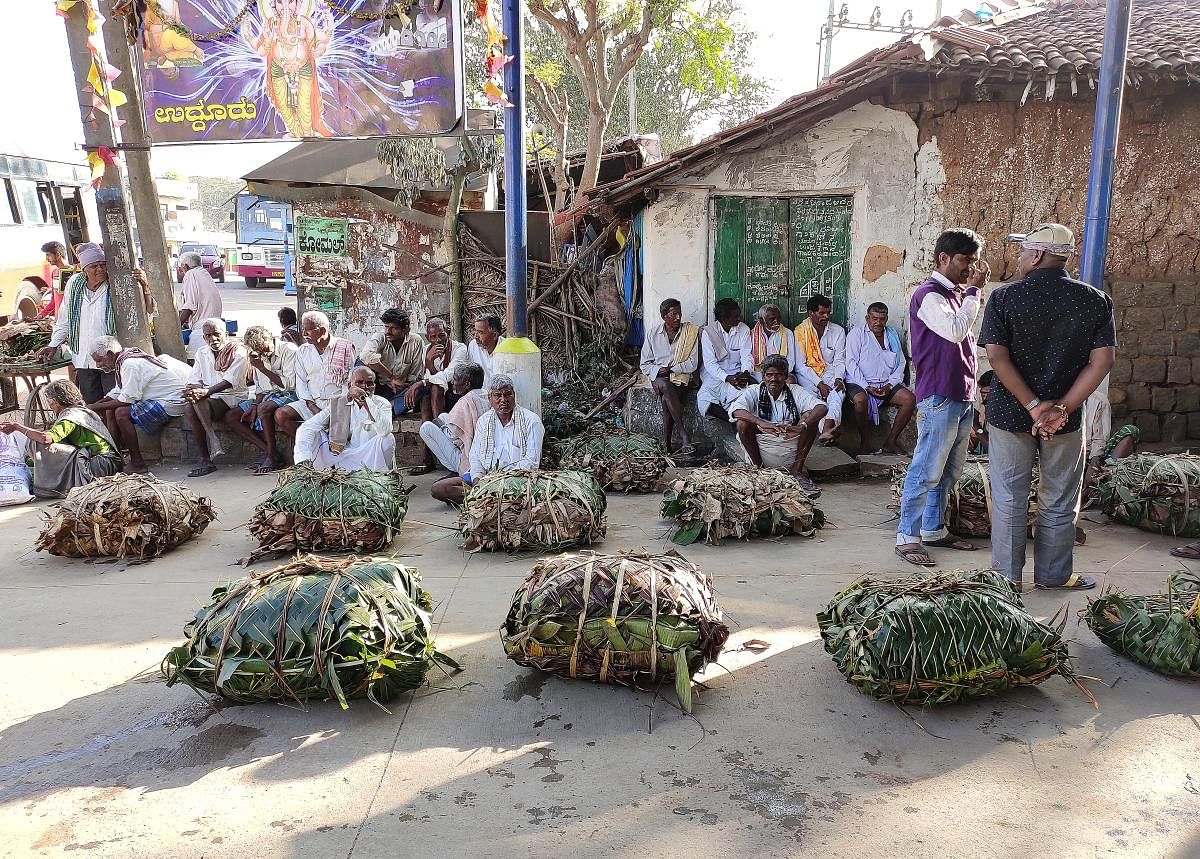

Udburu, a hamlet in Mysuru district, witnesses an interesting event every day.
The shelter in front of its Lakshmi Narayana Swamy Temple becomes the meeting point of farmers and wholesale buyers of betel leaves. What follows is no less than a competitive sport. But to understand it, a brief history of Mysuru district’s association with betel leaf is a prerequisite.
The district, and Udburu especially, has traditionally been a central landscape for the farming of the famed Mysore Viledele (Mysore betel leaf) and other betel leaf varieties. With a flavour of sweet-and-burning hot and a divine aroma, Mysore Viledele has even bagged a geographical indicator tag.
However, rapid urbanisation and conversion of ele thota (betel-leaf farms) into layouts have shrunken the area of betel-leaf cultivation. Increased labour cost, fluctuating prices, and sensitive nature of this crop have made betel-leaf farming less attractive.
In this grim backdrop, this event, exclusively for betel-leaf sale, is a silver lining and keeps the farming alive.
Now, welcome to the ‘ardha ghante veelyadele santhe’ (half-hour betel-leaf fair)...
Arrival
Everyday by 3.30 pm, betel-leaf growers of Udburu—a hamlet in Mysore district — along with the farmers from adjoining villages Kalale, Sindhuvalli, Marballi, Gumachanahalli, Yadthale and T Katoor begin to arrive at the Lakshmi Narayana Swamy Temple shelter in the same village. They carry pindis (sacks) with betel leaves, and set up the consignment on the
floor so they can begin business by 4 pm. Mari Chowda Naika, a betel-leaf farmer has been coming to this fair for the past 15 years. He says his father, now 90, too, brought his produce to this long-running, one-of-its-kind fair.
Congregation
This fair had been going on under the open sky until six years ago, when Lakshmi Narayana Swamy Temple built the shelter for the farmers considering the demand for the leaves.
Farmers from other villages, though, have to donate Rs 50 per pindi as an honorarium to the temple.
This is only a practice, not compulsion, says farmer Javara Naika. If farmers are ready on one side with their produce,whole-sale buyers are ready to bargain on the other, with curious onlookers close by. At sharp 4 pm, an attendant strikes against one of the iron poles of the shelter thrice. The fair commences.
Inside the lot
Farmers first have to subject their pindis (sacks) for quality test. A pindi is a structured package. Each one consists of 50 kattus (batches). Each kattu has
10 kouliges (bunch). And each koulige has 20 betel leaves.
So, every pindi has 10,000 leaves. Harvesting of the leaves starts early morning and by afternoon, pindis are ready for shipping. Back at the shelter, traders inspect the leaves for their shape, size, colour, tenderness and uniformity. Based on these parameters, the price is fixed.
Bargain
Both sellers and buyers come here with their respective price targets. Hard-core bargaining begins. The pindi price varies depending on market conditions.
“We incur loss if the price drops below Rs 3,500 (per pindi) owing to high labour,” says Mari Chowda Naika.Festivals and marriage seasons fetch farmers
more price, Aashaada and Dhanurmasa leave them with little profit.
“But, it’s not every time we walk back with our targeted price. Sometimes, we repack the leaves to try our luck elsewhere, like Devaraja Central Market(In Mysuru),” says farmer Mancha Naika. Every farmer closes the deal and the fair ends at 4.30 pm sharp.